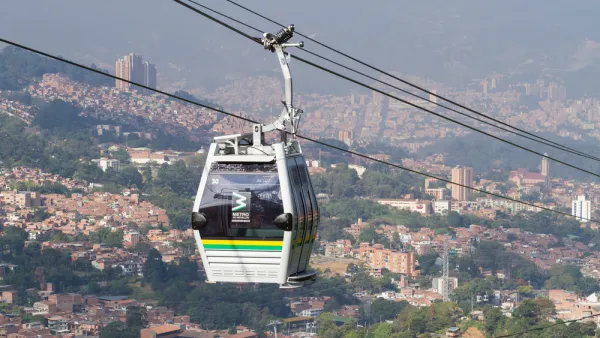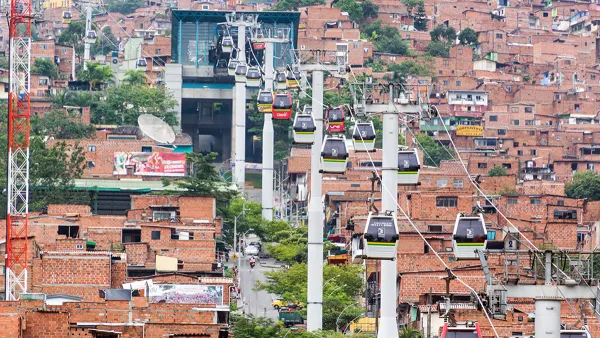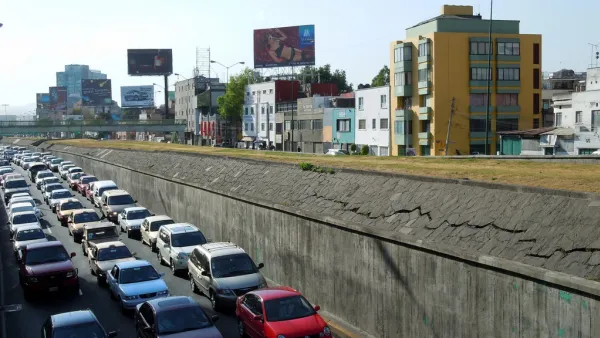Unlike many aerial gondolas, Mexico City’s Cablebus is largely used by commuters and residents from communities farther from the city center.

A three-year-old aerial cable car system is transforming Mexico City’s transportation network and making the trip into the central city faster and easier for people living in peripheral neighborhoods.
As Alex Vasquez explains in Bloomberg CityLab, “The Cablebus system has more than halved trips that used to take an hour and a half by bus or taxi, according to Mexico City's Mobility Ministry. In the sprawling megacity of some 22 million people, faster connections were needed for residents living far from the center and the major subway lines.”
Unlike many other aerial tram systems around the world, Mexico City’s system primarily serves residents in far-flung neighborhoods rather than tourists, “Most of the systems, like the ones in Medellin or in Caracas, Venezuela, move between 15,000 and 40,000 people a day; the Cablebus moves between 70,000 and 80,000 people a day.”
Residents perceive the Cablebus as safer than the city’s other transit options such as the subway system, where the city has created women-only cars to create safer spaces for women travelers, “Gisela Mendez, founder of urban development consultancy Ensamble Urbano, said that situations of harassment and violence against women are considerably reduced on the Cablebus compared to other transport systems.” For people whose work gives them less traditional schedules, the Cablebus’s round-the-clock schedule is also more convenient than buses or trains, whose services are concentrated around typical rush hours.
FULL STORY: The Cablebus Transformed Commutes in Mexico City’s Populous Outskirts

National Parks Layoffs Will Cause Communities to Lose Billions
Thousands of essential park workers were laid off this week, just before the busy spring break season.

Retro-silient?: America’s First “Eco-burb,” The Woodlands Turns 50
A master-planned community north of Houston offers lessons on green infrastructure and resilient design, but falls short of its founder’s lofty affordability and walkability goals.

Delivering for America Plan Will Downgrade Mail Service in at Least 49.5 Percent of Zip Codes
Republican and Democrat lawmakers criticize the plan for its disproportionate negative impact on rural communities.

Test News Post 1
This is a summary

Test News Headline 46
Test for the image on the front page.

Balancing Bombs and Butterflies: How the National Guard Protects a Rare Species
The National Guard at Fort Indiantown Gap uses GIS technology and land management strategies to balance military training with conservation efforts, ensuring the survival of the rare eastern regal fritillary butterfly.
Urban Design for Planners 1: Software Tools
This six-course series explores essential urban design concepts using open source software and equips planners with the tools they need to participate fully in the urban design process.
Planning for Universal Design
Learn the tools for implementing Universal Design in planning regulations.
EMC Planning Group, Inc.
Planetizen
Planetizen
Mpact (formerly Rail~Volution)
Great Falls Development Authority, Inc.
HUDs Office of Policy Development and Research
NYU Wagner Graduate School of Public Service





























